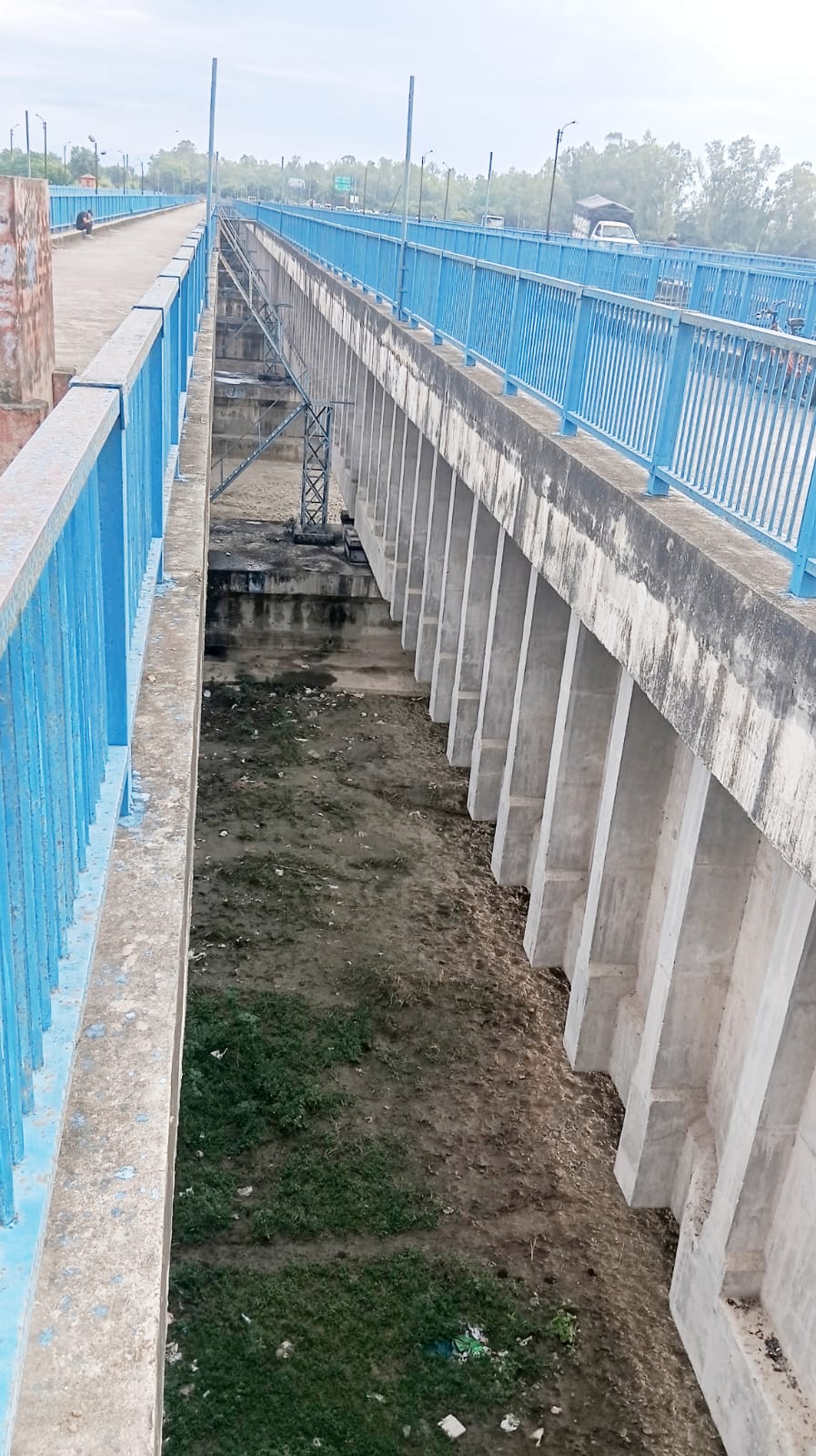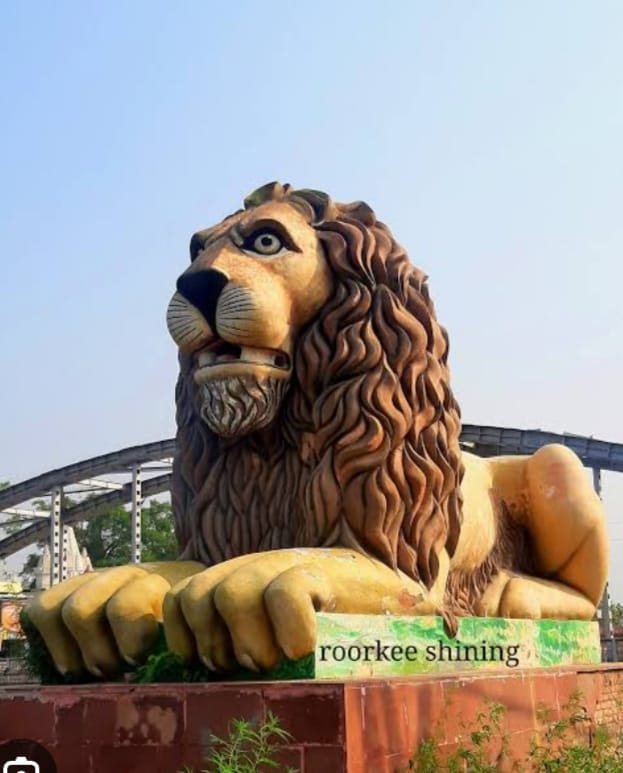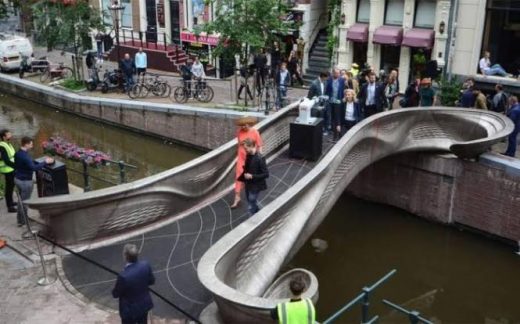By
Kaushal Kishore
Materials Engineer, Roorkee
The new Solani aqueduct on Ganges canal Roorkee was built with prestressed concrete which allows for longer spans and a simple more robust design compared to old bricks, lime- surkhi mortar masonry arches of the old aqueduct, in which 8.5 crores bricks were used, while iron railing used in the sides of two lanes were imported from England. This is interesting to note that materials bringing those days on ship from England to Indian ports take 6-10 weeks via the Suez canal or 3 to 6 months via the longer Cape of Good Hope. Calculate in it also time taken on road from Indian ports to Roorkee.
After retirement from University of now IIT Roorkee I joined M/S Roffe Construction Chemicals Pvt.Ltdd, Mumbai as it’s Chief Concrete Technologists afterwards I became it’s one of the Director.

AQUEDUCT picture taken on 7/10/2025
For the contractor of above aqueduct I designed M-40 grade of concrete with Roffe superpladticizer. Those interested may read my paper by visiting Google site and log in; Civil engineering portal The Ganges canal by Kaushal Kishore.
I had designed numerous concrete mix design almost all cements of India in this I find Utra Tech cement as one of best cement OPC and PPC both With Ultratech cement I had designed numerous concrete mixes from ordinary strength to M-80 grade concrete, self compacting concrete, shot crete concrete, fibre reinforced concrete, fly ash concrete and more There is life after retirement and after retirement I worked for 30 year’s which includes in free time working in home research and testing laboratory and numerous construction sites visits almost all India and outside India. At my age of 92 years I still work for 12 hours daily.
I had never worked for money. In spite of doing so gigantic work what to say about car I even do not have 2 wheeler not any of my house not a single inch of land in this world only pension from IIT Roorkee and few clothes


























which of them having reinforcement bar is more, under or over reinforcement ?
technically it should be explained in different terms. Under reinforcement is where steel reaches yield strain at loads lower than the load at which the concrete reaches failure strain and over reinforcement is vice versa. In lay man terms Ast will be lesser than the balanced section in under reinforced, which means there will not be any sudden collapse.
Pls, I need an help on my project topic that say investigation and characterization on a solid waste disposal site and its impact on soil and water.
Which is top company for civil
In DMC method how excavated soil, slush & bentonite slurry is removed out
The topmost drill pipe is connected with a hose emerging from the vertical pump (installed in the bentonite) pit sending fresh bentonite slurry to the borehole through a fine opening in chisel and when the bore hole is filled to the brink, it flows back to the bentonite pit along with the mud through the artificial conduit. In this way the mud from the bore keeps on moving up the borehole and is directed to the bentonite tank.It is preferred to use fresh and clean water for the preparation of bentonite suspension as the minutest impurities may alter the properties of a suspension. In case, clean water is not available at the site, special additives such as Ferrosome lignosulphate in combination with soda ash, phosphates and flocculants are added.
I want to construct a compound wall of 250 running feet with a height of 5′ and thickness 9″….. Can someone help me out how the foundation should be?
You can excavate the soil upto 3’6″ then run a 15″X15″ beam at the bottom and construct a RCC wall upto the ground wall ., from ground level to 5′ hight you can built wall with the normal brickwork….!!
It must be a continous footing,stepped,rectagular.
Hi, I have to make a term project in the field of sediment transport (40 to 50 pages), to be submitted as my project for M.E. Can anyone help me.
Please,I need an help on my project topic that say investigation and characterization on a solid waste disposal site and its impact on soil and water.
please suggest online or distance education for quantity survey course.
Hi, I am a student of civil engineering ….n I have to complete a project file of my minor project ……so this is first time for me…..can someone please help me ………….how to make a front page, certificate and acknowledgement……n my project is on “widening of road”
plss.. suggest me.. at least one or two website to learn..how can a beginner learn about engineering practically at home????????????
I want a help on project topic…..plastic road construction… How much plastic is needed to be added with bitumen for plastic road construction ?
Somebody help me
This is point wiring measurement specification as per CPWD norms.
I could not understand what is type 1, type 2 , type 3 and type 4 residential buildings help me to resolve this.
Thanks
How can measurement of point wiring as per cpwd norms ?
what is the best admixture in replacement of river sand by using of sea sand partially or fully
Good Day. What is the relevant international code that requires to provide a puddle flange during construction when a pipe passes thru a manhole? Thank you very much for the enlightenment.
I am confused between terzaghi’s method and Meyerhoff’s method of bearing capacity. Which is the standard one to be followed for designing shallow foundation
Hi,
Can any one get clear my doubt for cement sand mortar use as plaster works, why we check its compressive strength, in actually when we applied it on wall may be thickness of 20 mm,12mm…,
I think/doubt instead of testing its Compressive Strength as mentioned in BIS codes, it should be its bonding strength & impermeably properties with substrate.
Regards
Vinay
Hi guys
I m in a hydropower project conducting a dpr (detailed project report). I m new to field and we have conduct sediment tests….what are the tests and ways to aquire data. If anyone could suggest us some ways or share pdfs . Very thankful of you guys..
I want book on total experiments in lab on civil engineering material.
please guide me
NO BOOK AVAILABLE IN MARKET FOR SPECIALIZATION in LAB so constrat in field work as well as material lab testing and do self.
Prepare from IS codes for best and accurate knowledge in material testings.
take the book of pn khanna.
hello sirs
I wanted to study civil engineering in diploma level and after it,s completetion i want to work and study .what are the benifits of working and studying engineering
some suggestions please
It is welcome decision, the society require the help of engineers for addressing their problems related to establishment of habitats and living.
The Civil Engineering studies equip you to create a living with self sufficient and sustainable living. It will provide knowledge as how to create a self sufficient sustainable habitats